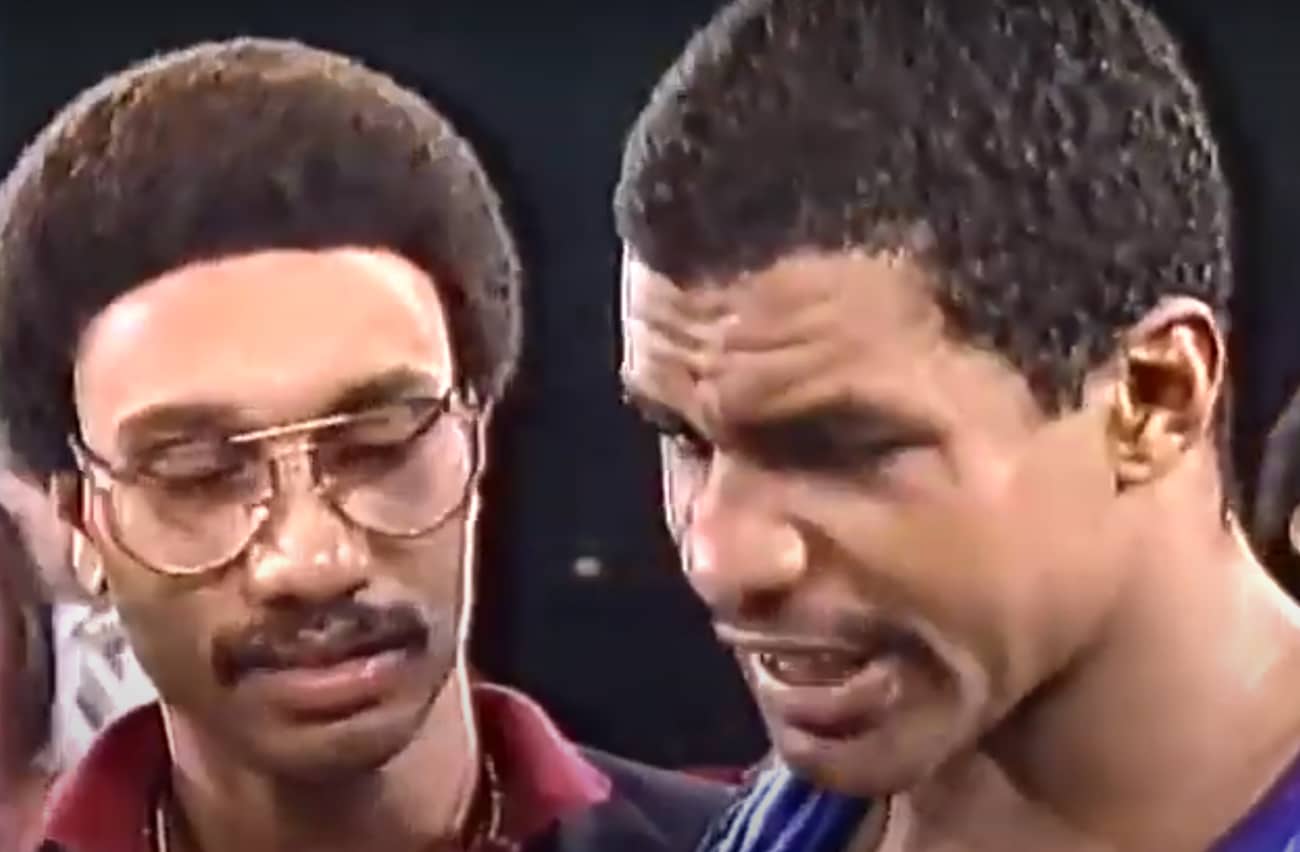Talk about a boxer who could blow hot and cold in a major way. Puerto Rican cutie Carlos De Leon could box quite masterfully on one night, with him also showing good punching power and venom. On another night, De Leon could look disinterested and lazy. At his best, though, the man known as “Sugar” was indeed pretty sweet. De Leon, who made history – twice – this by becoming the first man to regain the cruiserweight title, and then, later, by becoming the first fighter to win a cruiserweight title four times, had a long career, and he faced numerous big names.
Going pro in August of 1974, aged just 15, De Leon romped to eight straight wins before he dropped a four-round decision to Roberto Colon in 1975. Fighting at home in Puerto Rico as well as in The Virgin Islands, De Leon was 29-2 by the time he got his first crack at a world title; De Leon having lost another fight on points, this one to Ray Hammond in 1977. Facing Marvin Camel in New Orleans on November 25th, the fight taking place on the Sugar Ray Leonard-Roberto Duran “No Mas” card, De Leon edged Camel via majority decision. The fight was no classic, but De Leon, at the young age of 21, was WBC champion.
In a return with Camel, De Leon showed his power by halting Camel in the eighth round. Then, in a shocker, De Leon was taken down in two rounds by S.T Gordon. De Leon bounced back with wins over Ivy Brown and Leon Spinks before he made history by avenging the loss to Gordon, this on points over 12, with him becoming the first-ever two-time cruiserweight champ. Good retentions over Yaqui Lopez and Bash Ali followed before De Leon was outworked and outpointed by Alonzo Ratliff in the summer of 1985.
De Leon, quite incredibly, had another ten years of fight left in him.
De Leon beat Bernard Benton to become a three-time champ, this a year after the loss to Ratliff, and then, three title retentions later, “Sugar” got the biggest fight of his career. Facing Evander Holyfield in Vegas in April of 1988, De Leon and his bag of tricks frustrated Holyfield some, with Evander having to figure De Leon out. This Holyfield eventually did, with him stopping De Leon in the eighth round of their WBC/IBF/WBA unification clash.
Now aged 28 and sporting a 44-5 record, De Leon moved on, and he traveled to the UK for the first of two bouts, one of which still ranks as one of the most unimaginably dull “fights” ever seen. First, in May of 1989, De Leon stopped Sammy Reeson in London, the win seeing him become a four-time ruler, the WBC belt vacated by Holyfield. Then, in January of the following year, De Leon boxed a draw with a wholly ineffective Johnny Nelson. Truly, Nelson scarcely threw a punch of any meaning all night long while the challenger was only occasionally in punching distance. It was shockingly bad, a real cure for insomnia. De Leon wasn’t much better than Nelson, but he was happy enough to have kept hold of his belt, and in De Leon’s next fight, controversy followed, as he was thrown out for hitting Massimiliano Duran after the bell in round 11 of the fight held in Italy. This would be De Leon’s final world title fight.
Carrying on and trying his hand against some heavyweights, De Leon went 8-2 in his final ten fights, with him being stopped by Corrie Sanders (in a flash, the fight over inside a minute) and Brian Nielson. Exiting with a 53-8-1(33) record, De Leon would go on to train his son, Carlos Jr. Sadly, De Leon died aged just 60, this from a heart attack in January of 2020.
So, how great was De Leon? Was he even great at all? Carlos could box; he knew a ton of tricks and moves, and of course, he is in the history books. De Leon was a real handful for anyone when he was sufficiently motivated. At other times, De Leon appeared to be nothing special. Still, for some, for quite a few experts and fans, De Leon ranks as one of the ten greatest cruiserweights ever.
